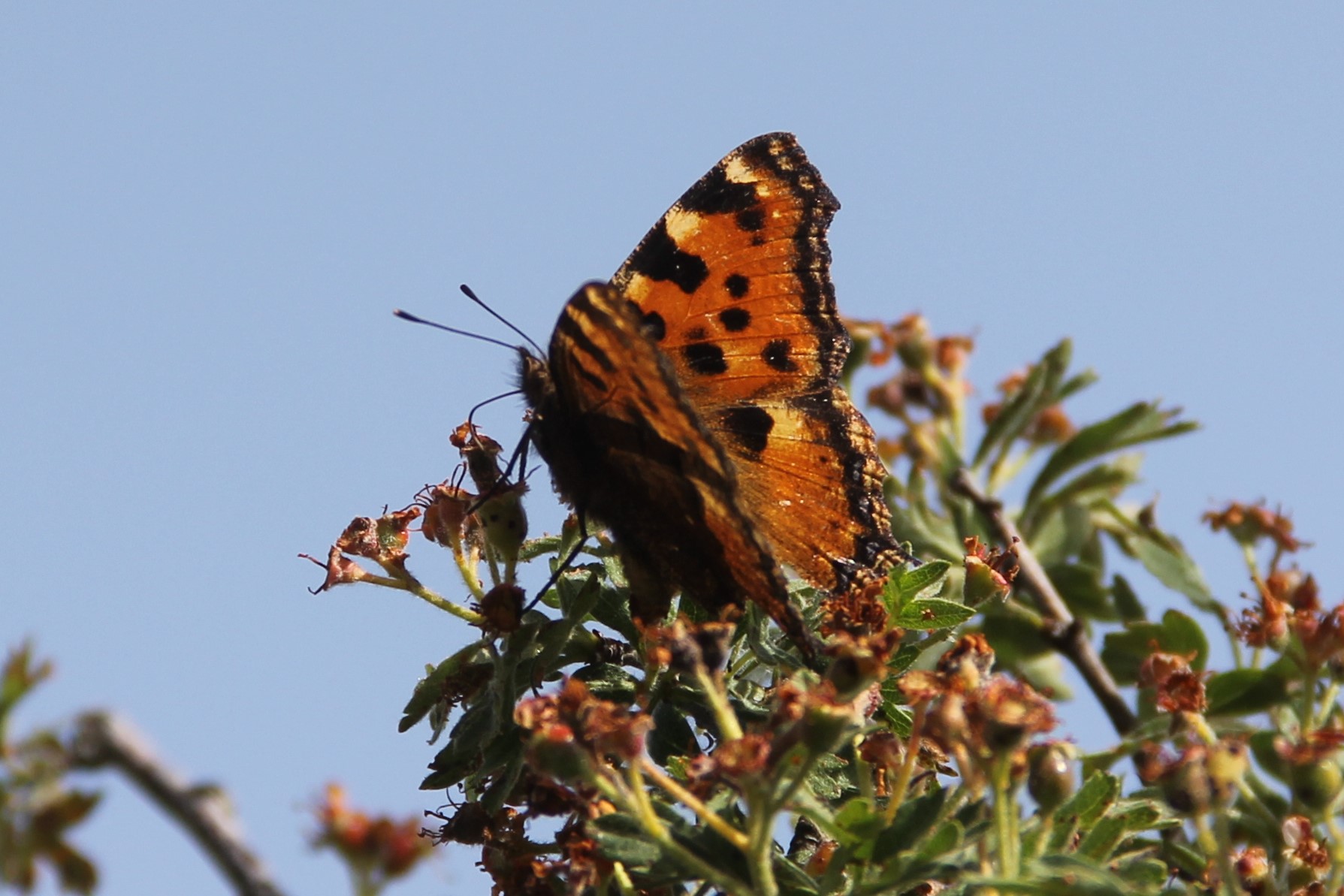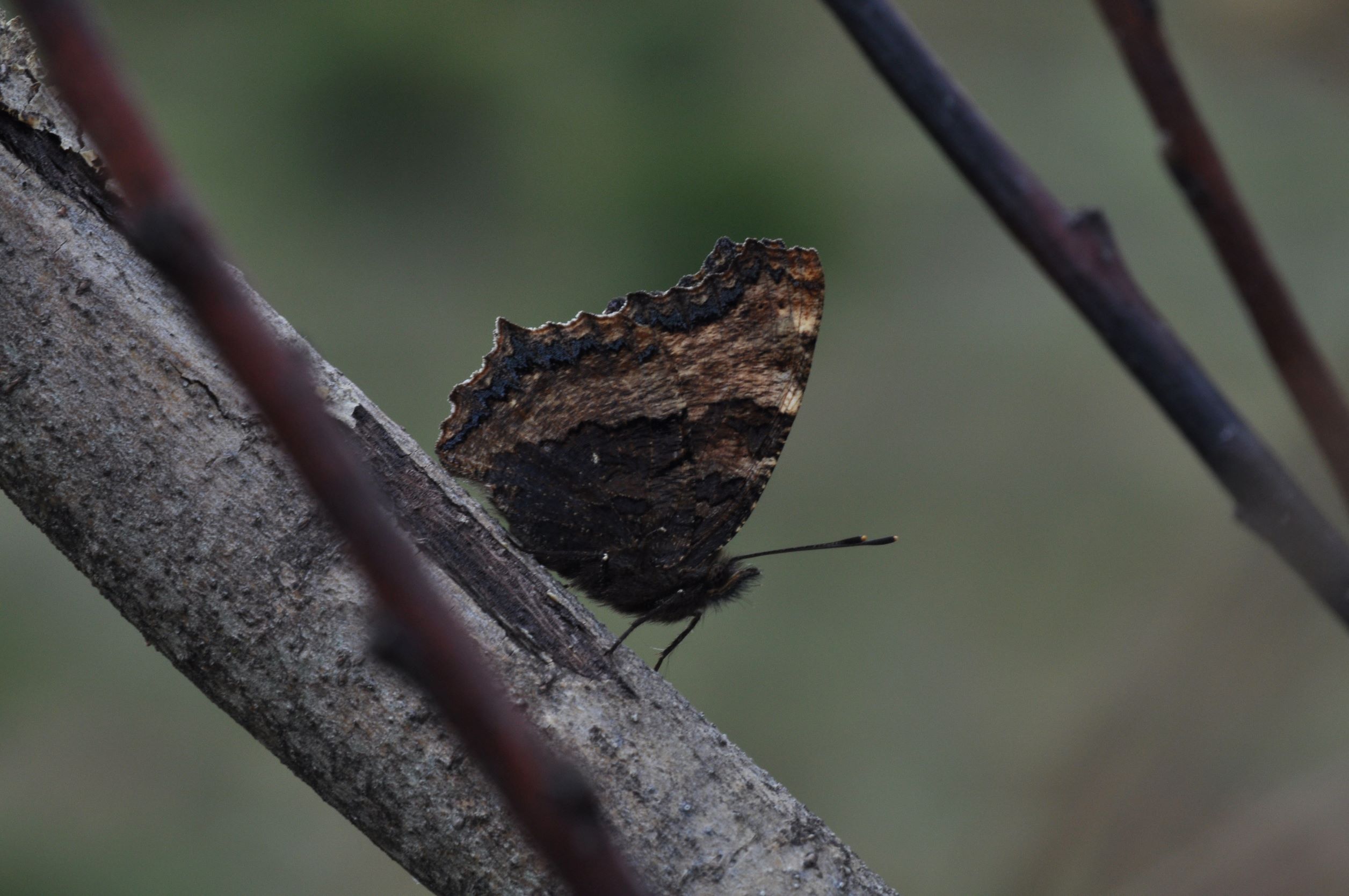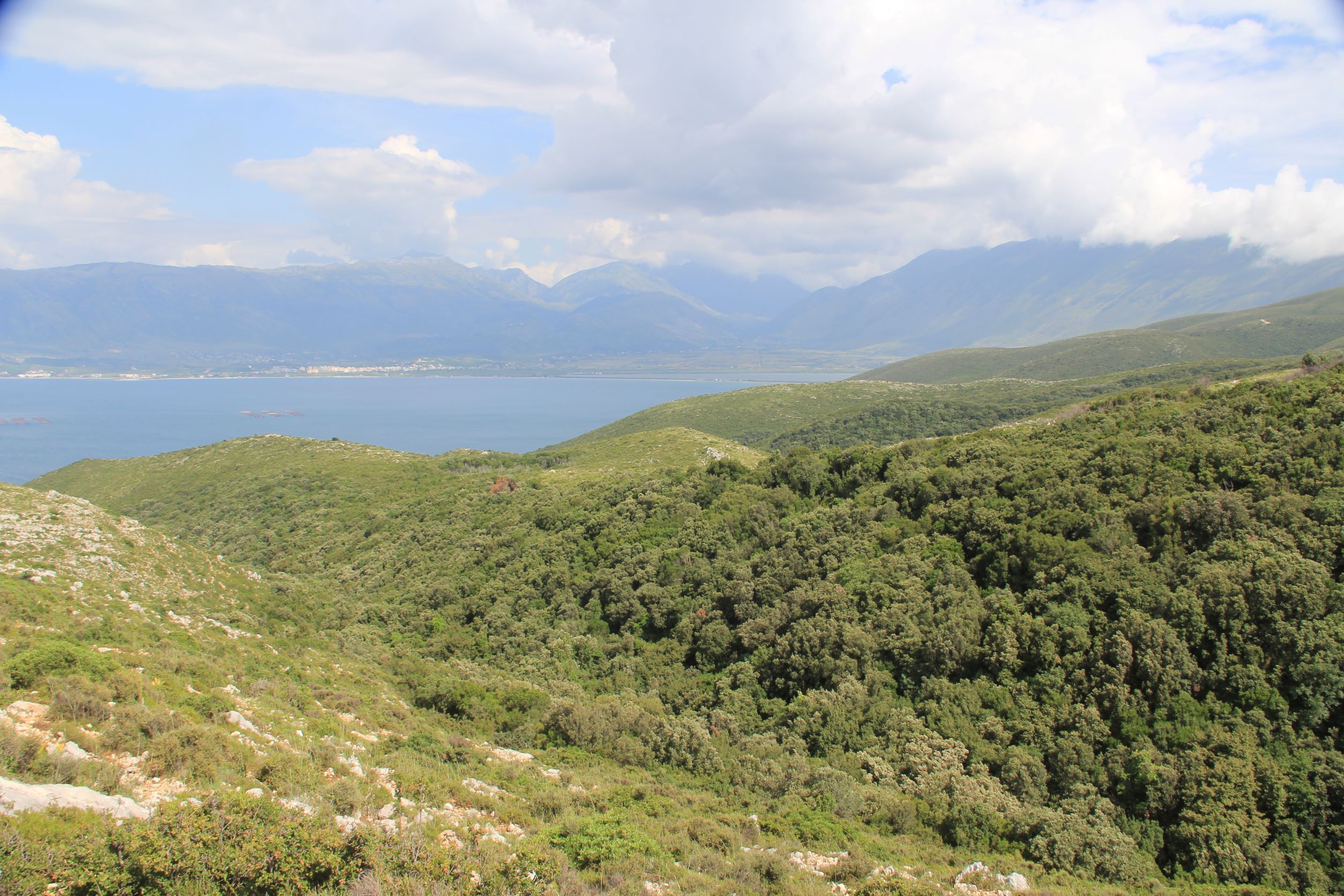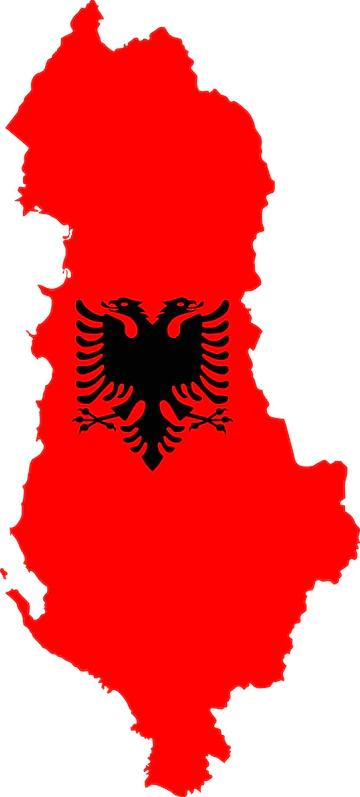|
Nymphalis polychloros / Large Tortoiseshell
Shumëngjyrëshja
Nymphalidae - Nymphalinae
Nymphalis polychloros (Linnaeus, 1758). TL: Sweden.
 
 
1a. Nymphalis polychloros, distribution map (09.i.2025).  Historical data ; Historical data ;  Additional data from the 2018 update ; Additional data from the 2018 update ;  New observations since the 2018 update. New observations since the 2018 update.
1b. Nymphalis polychloros upperside. Llogora pass, Albania (©Lulëzim Shuka)
1c. Nymphalis polychloros underside. Mali i Ostrovicës, Albania (© Sylvain Cuvelier)
1d. Habitat of Nymphalis polychloros. Llogoro pass-Qorre, Albania (© Lulëzim Shuka)
Description
♂♂
Large butterfly.
Dark brown-black hairs on palpi and legs.
Ups: orange brown gc, black markings, blue submarginal lunules, pale lunules enclosed in dark marginal border.
Upf: s1b black dot.
Uph: no contrasting basal area.
Uns: brown to blue-black basal area, postdiscal area paler.
♀♀
Slightly larger, similar markings.
Similar species
Life cycle
Adults: from spring to April after overwintering, single generation from June to August and even later (single specimens)
Egg: 17-22 days.
Caterpilar:
30-50 days.
Pupa: 14-20 days.
Habitat
Nymphalis polychloros inhabits open forests from lowland up to 1750 m a.s.l., when wandering even at highter altitude.
Spatial requirement considerable, population density can be high, nomadic.
Foodplants
Caterpillars feed on Populus tremula, Prunus avium, Salix alba, S. cinerea, Ulmus glabra, U. laevis, U. minor, also mentioned are Celtis australis, Crataegus monogyna, Malus domestica, M. sylvestris, Ostrya carpinifolia, Populus alba, P. nigra, Prunus cerasus, P. domestica, P. padus, Pyrus communis, Quercus pubescens, Salix babylonica , S. caprea, S. purpurea and S. viminalis,
Butterflies feed on catkins of flowering willows (spring) and fluid from wounds of trees, rotten animals and faeces (summer), mud-puddling.
Distribution
Albania: widespread.
Balkan: AL - BG - BIH - GR - HR - NMK - MNE - RKS - RO - SLO - SRB
Europe: IB - IT - ALP - BAL - NWE - UK - SCA* - EEU
Asia Minor, Near East, Transcaucasia, Caucasus and further east.
Conservation status
Nymphalis polychloros is not endangered.
Albanian Red List: LC.
IUCN Red List, category at the Mediterranean level: LC.
Useful links
Bink 2015
Pyrgus.de
Lepiforum
Euroleps
|
 xx
xx 



 Historical data ;
Historical data ;  Additional data from the 2018 update ;
Additional data from the 2018 update ;  New observations since the 2018 update.
New observations since the 2018 update.